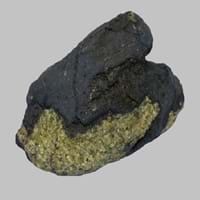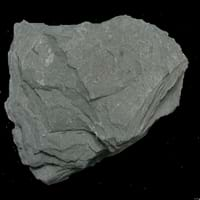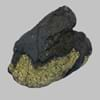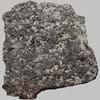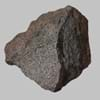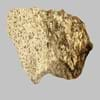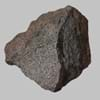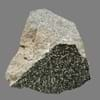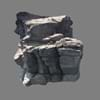Definition
Basanite is a black basaltic rock which mainly contains plagioclase, augite, olivine and nepheline and is formerly used as a touchstone
Slate is a fine-grained, foliated, homogeneous metamorphic rock derived from an original shale-type sedimentary rock composed of clay or volcanic ash through low-grade regional metamorphism
Discoverer
Unknown
Unknown
Etymology
From Latin basanites + -ite
From Old French esclate, from esclat (French éclat)
Class
Igneous Rocks
Metamorphic Rocks
Sub-Class
Durable Rock, Hard Rock
Durable Rock, Medium Hardness Rock
Group
Not Applicable
Not Applicable
Other Categories
Fine Grained Rock, Opaque Rock
Fine Grained Rock, Opaque Rock
Texture
Aphanitic to Porphyritic
Foliated
Color
Black, Brown, Green, Grey, Red, White
Black, Brown, Buff, Green, Light to Dark Grey, Purple, Red, Shades of Blue
Durability
Durable
Durable
Scratch Resistant
Yes
Yes
Appearance
Glassy or Pearly
Dull
Interior Uses
Decorative Aggregates, Homes
Bathrooms, Decorative Aggregates, Entryways, Floor Tiles, Flooring, Homes, Hotels, Interior Decoration, Kitchens, Stair Treads
Exterior Uses
As Building Stone, Garden Decoration, Office Buildings
As Building Stone, As Facing Stone, Garden Decoration, Paving Stone
Other Architectural Uses
Whetstones
Curbing
Construction Industry
Arrowheads, Construction Aggregate, Cutting Tool, Spear Points
As Dimension Stone
Medical Industry
Not Yet Used
Not Yet Used
Antiquity Uses
Artifacts, Monuments
Artifacts, Monuments, Sculpture, Small Figurines
Commercial Uses
As a touchstone, Creating Artwork, Gemstone, In fire-starting tools, Manufacture of tools, Metallurgical Flux, Jewelry, To ignite fire, Used in flintlock firearms
Blackboards, Commemorative Tablets, Laboratory bench tops, Standard material for the bed of Billiard table, Standard material for the beds of Pool and Snooker table, Tombstones, Used in aquariums, Writing Slates
Types
Nepheline-Basanite, Analcite-Basanite and Leucite-Basanite
Not Available
Features
Clasts are smooth to touch, Easily splits into thin plates, Has High structural resistance against erosion and climate, Used as a touchstone
Easily splits into thin plates, Surfaces are often shiny, Very fine grained rock
Archaeological Significance
Famous Monuments
Data Not Available
Data Not Available
Sculpture
Not Yet Used
Used
Famous Sculptures
Not Applicable
Data Not Available
Pictographs
Not Used
Used
Petroglyphs
Not Used
Used
Figurines
Not Yet Used
Used
Formation
Basanite is a fine-grained, hard rock that forms when bits of lava shoot out of volcanoes.
Slate is a low grade metamorphic rock that is generally formed by metamorphosis of mudstone or shale, under relatively low pressure and temperature conditions.
Mineral Content
Augite, Feldspar, Ilmenite, Olivine, Plagioclase
Apatite, Biotite, Chlorite, Feldspar, Graphite, Hematite, Kaolinite, Magnetite, Pyrite, Tourmaline, Zircon
Compound Content
Potassium Oxide, Sodium Oxide, Silicon Dioxide
Aluminium Oxide, CaO, Iron(III) Oxide, Potassium Oxide, MgO, Sodium Oxide, Silicon Dioxide, Titanium Dioxide
Types of Metamorphism
Burial Metamorphism, Cataclastic Metamorphism, Contact Metamorphism, Regional Metamorphism
Burial Metamorphism, Cataclastic Metamorphism, Regional Metamorphism
Types of Weathering
Chemical Weathering, Mechanical Weathering
Biological Weathering, Chemical Weathering, Mechanical Weathering
Types of Erosion
Chemical Erosion, Coastal Erosion, Glacier Erosion, Sea Erosion, Water Erosion, Wind Erosion
Coastal Erosion, Glacier Erosion, Water Erosion, Wind Erosion
Grain Size
Fine Grained
Very fine-grained
Fracture
Uneven, Splintery or Conchoidal
Splintery
Streak
White
Light to dark brown
Porosity
Highly Porous
Less Porous
Luster
Waxy and Dull
Dull
Compressive Strength
Not Available
Cleavage
Non-Existent
Slaty
Specific Gravity
2.5-2.8
2.65-2.8
Transparency
Translucent to Opaque
Opaque
Density
2.7 g/cm3
2.6-2.8 g/cm3
Resistance
Heat Resistant, Impact Resistant, Pressure Resistant, Wear Resistant
Heat Resistant, Impact Resistant, Pressure Resistant, Wear Resistant
Deposits in Eastern Continents
Asia
Not Yet Found
China, India, Turkey
Africa
Uganda
Not Yet Found
Europe
Germany, Hungary, Italy, Spain
Belgium, France, Germany, Italy, Norway, Portugal, Spain, United Kingdom
Others
Greenland, Mid-Atlantic Ridge
Arctic
Deposits in Western Continents
South America
Bolivia, Brazil
Brazil
Deposits in Oceania Continent
Australia
New South Wales, New Zealand, Queensland, South Australia, Western Australia
Not Yet Found
All about Basanite and Slate Properties
Know all about Basanite and Slate properties here. All properties of rocks are important as they define the type of rock and its application. Basanite belongs to Igneous Rocks while Slate belongs to Metamorphic Rocks.Texture of Basanite is Aphanitic to Porphyritic whereas that of Slate is Foliated. Basanite appears Glassy or Pearly and Slate appears Dull. The luster of Basanite is waxy and dull while that of Slate is dull. Basanite is available in black, brown, green, grey, red, white colors whereas Slate is available in black, brown, buff, green, light to dark grey, purple, red, shades of blue colors. The commercial uses of Basanite are as a touchstone, creating artwork, gemstone, in fire-starting tools, manufacture of tools, metallurgical flux, jewelry, to ignite fire, used in flintlock firearms and that of Slate are blackboards, commemorative tablets, laboratory bench tops, standard material for the bed of billiard table, standard material for the beds of pool and snooker table, tombstones, used in aquariums, writing slates.
